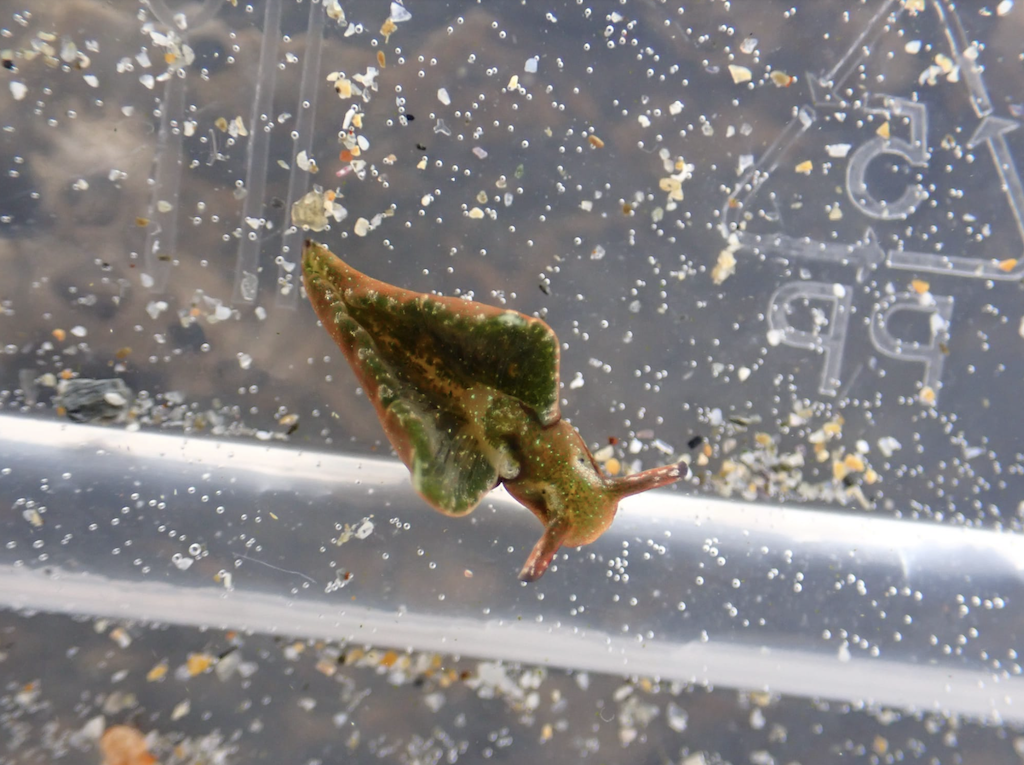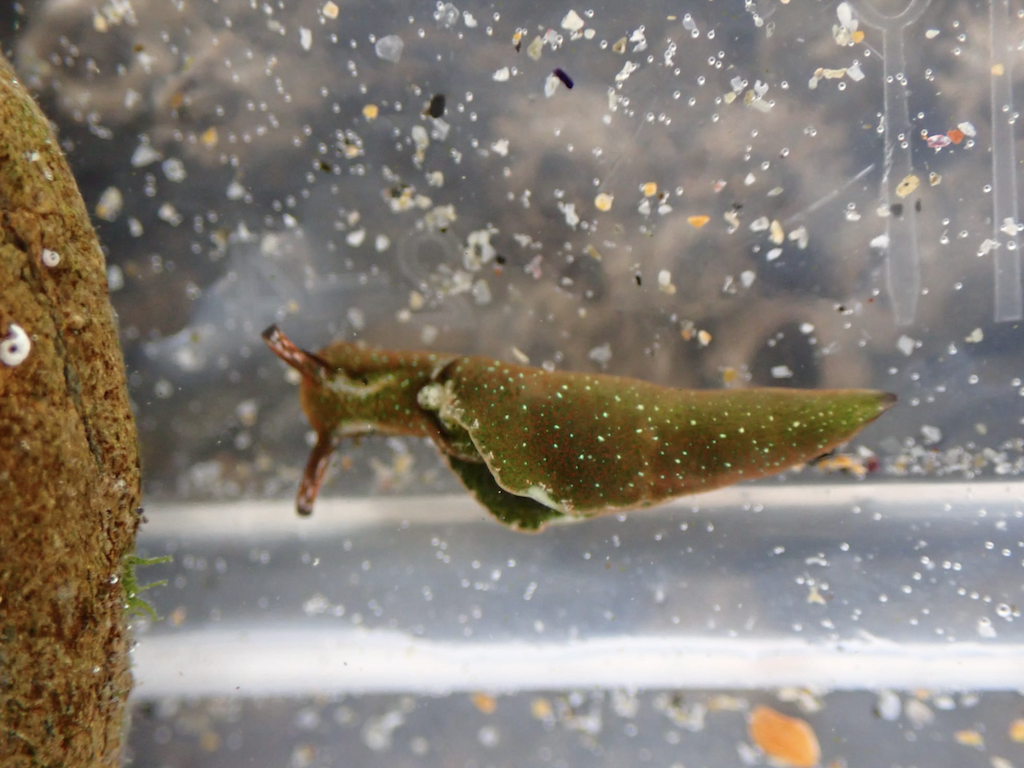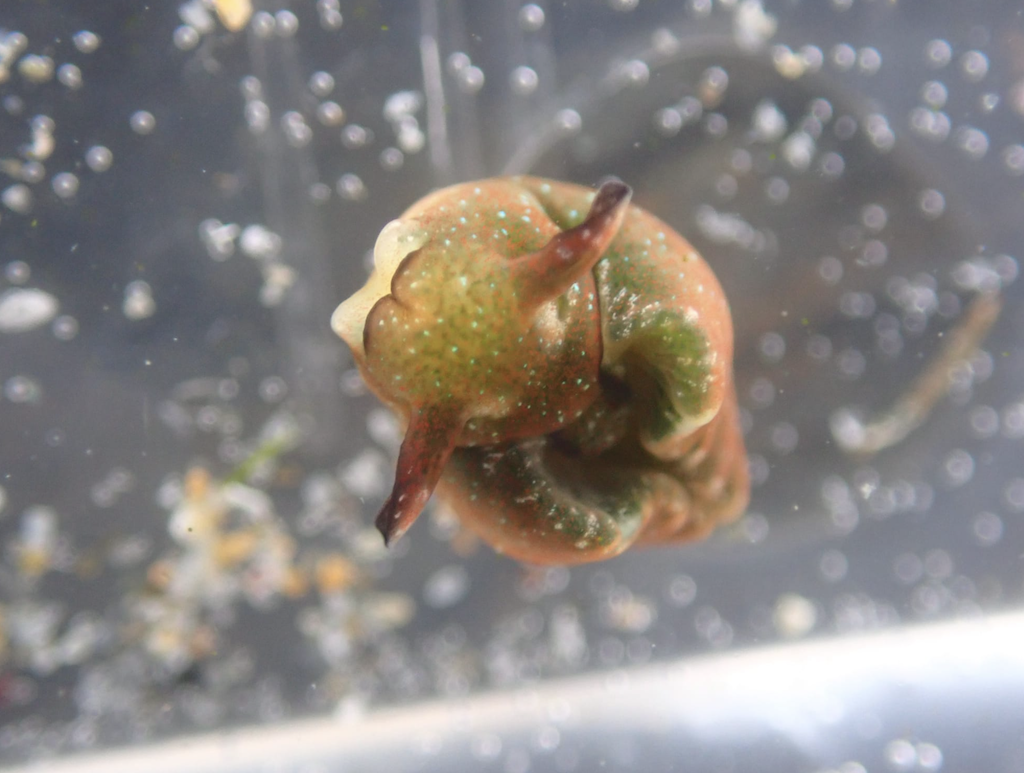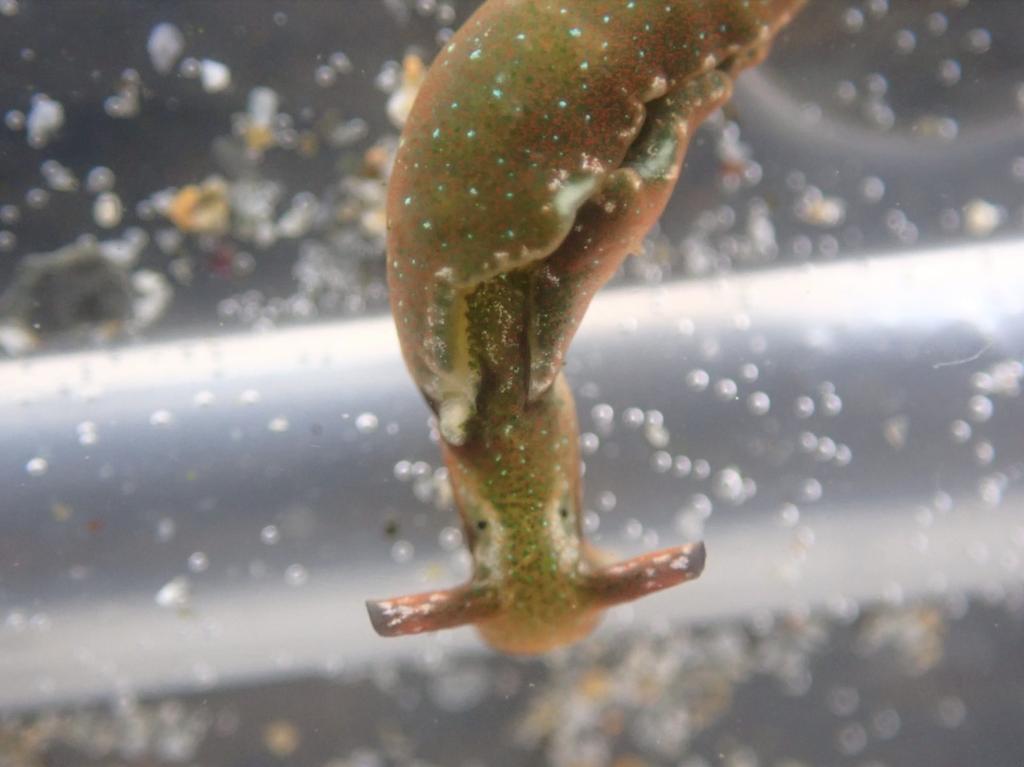Green Elysia – Solar-powered sea slug
This delicate leafy-looking sea slug is a frequent inhabitant of the rocky shore of the Northeast Atlantic, Mediterranean and South Africa. Where present, they can be found with relative ease (if you know where to look 😊).
As the order name, Sap-sucking sea slugs (Sacoglossa), suggests these slugs feed on a variety of algae including Codium, Cladophora, and Chaetomorpha. All these can be found in the low shore rockpools and shallows.
Elysia viridis reaches lengths of up to 5cm. Its body is covered with tiny vibrant blue, green, and red iridescent spots reminiscent of glitter. A macro camera or a magnifying glass may be needed to observe these. The slug’s colouration varies with diet; greens, browns, reds, and rarely oranges can be found. The individual photographed here was found feeding on Codium hence the dark green colouration.
With its parapodial “wings” opened the slug takes the appearance of a leaf with the ramified digestive tract which resembles veins on a leaf, visible through the body.
Kleptoplasty
The aptly named “Solar powered sea slug” has a special ability. Chloroplasts form the slug’s algal food sources are “stolen” and absorbed by the slug’s digestive tissues in a process known as “Kleptoplasty”. The chloroplasts can remain fully functional for several months and allow E.viridis to effectively photosynthesize. Studies have shown that photosynthesis may play an important role in the reproductive success of E.viridis.
How to find Solar powered sea slugs
Start by locating the algae upon which Elysia viridis is known to feed. Carefully comb through the seaweed with your fingers and look for small bright squidgy lumps on the seaweed fronds. If the seaweed is attached to a small rock that, it can be placed in a bucket/ tray of sea water and shaken to dislodge any beasties! After you’re finished observing this superpowered mollusc please make sure you return it and the rock back as you found them.
Happy rock pooling!
Ivan S Underwood




